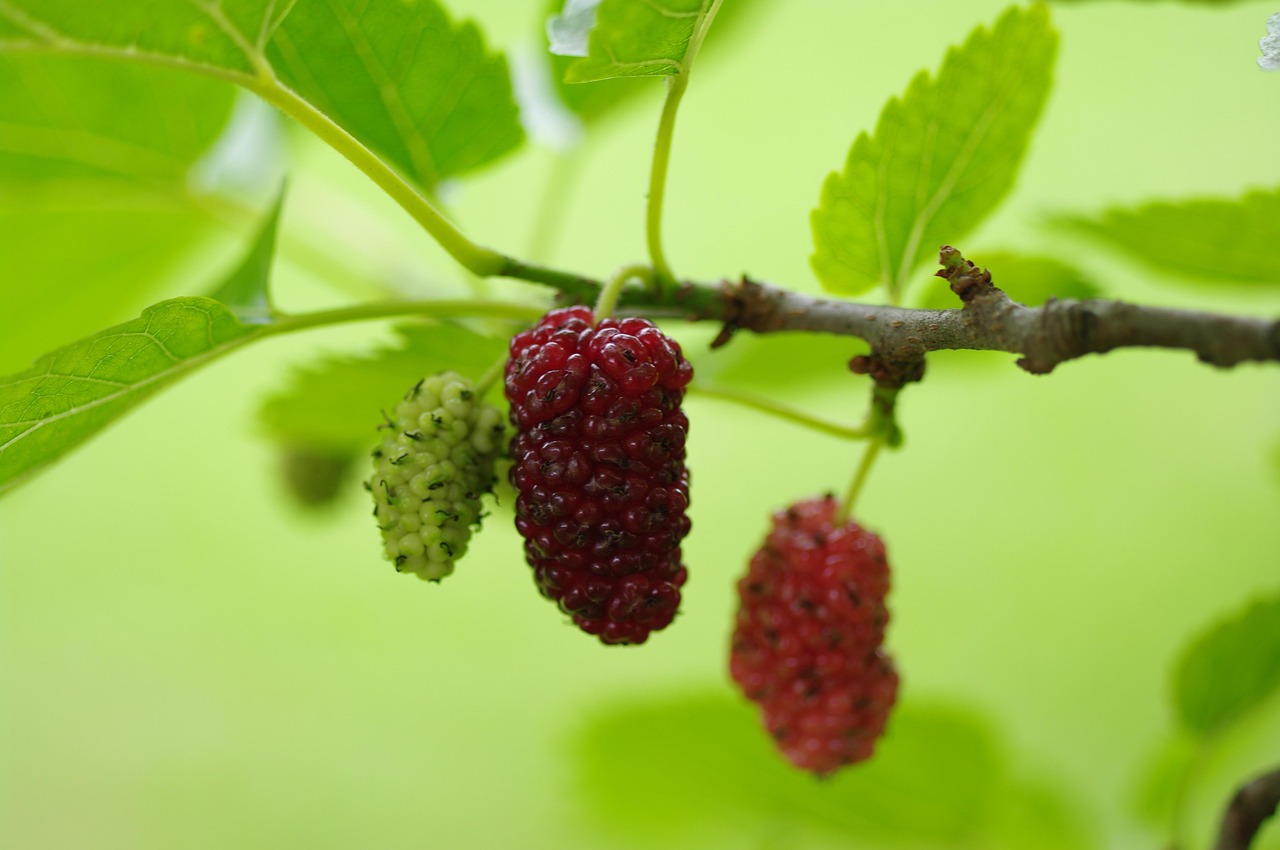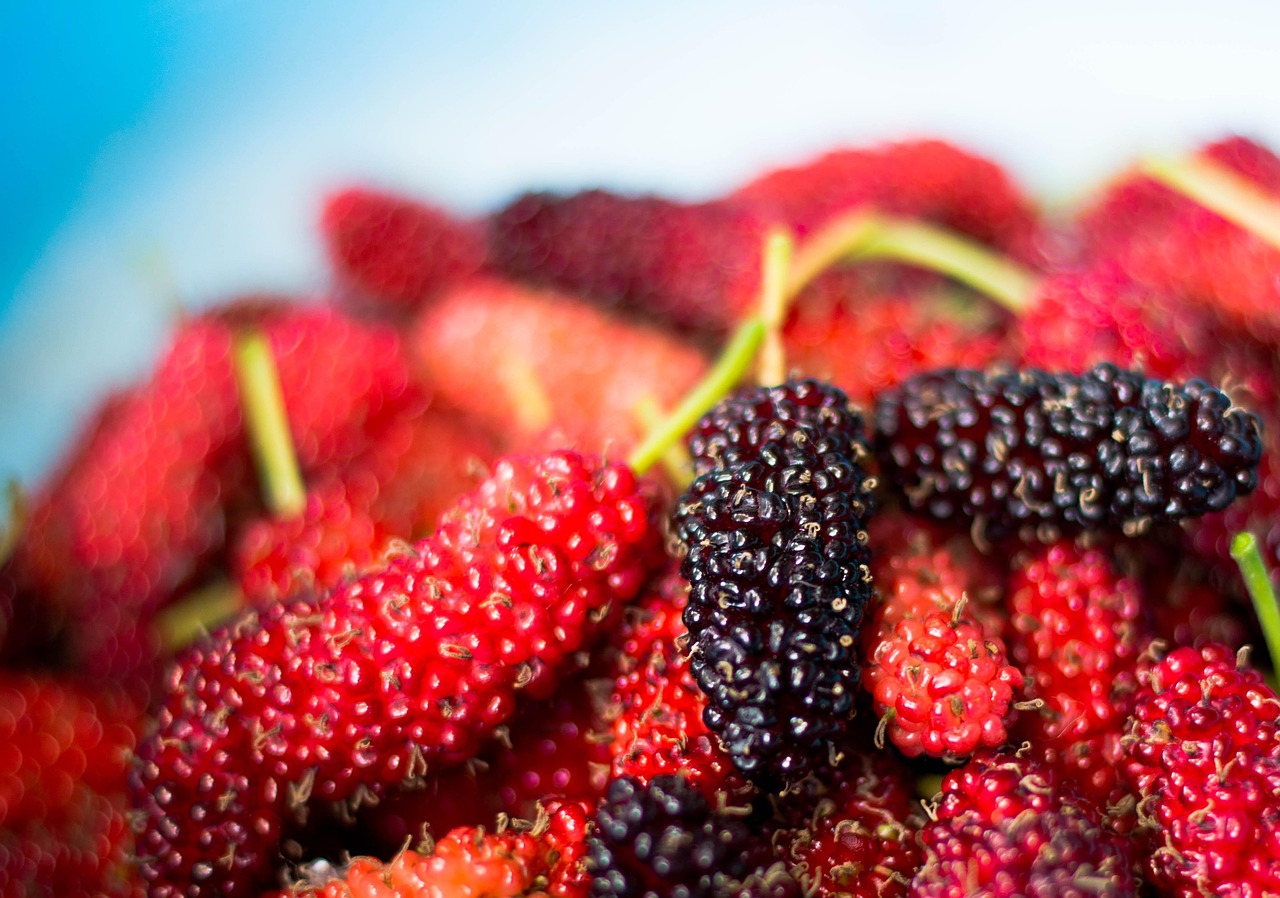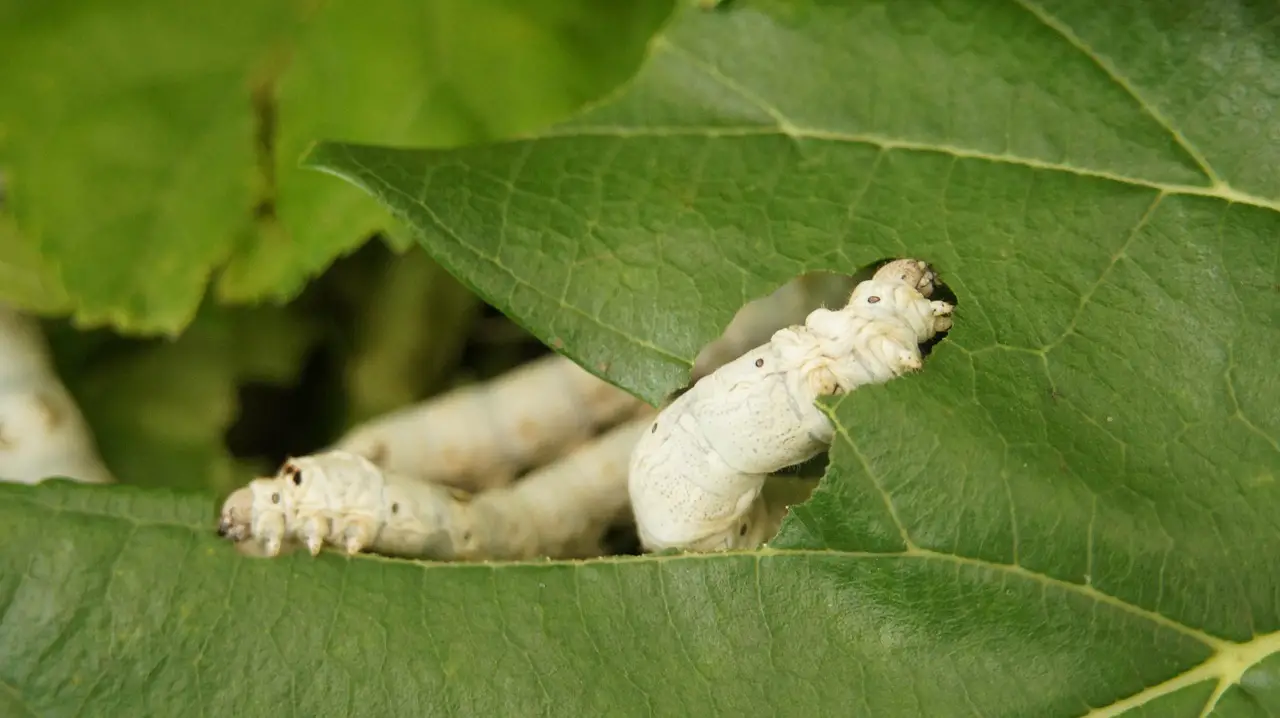Pruning mulberry trees is essential for optimizing silk farming ventures. Proper pruning enhances tree health, increases leaf production, and improves accessibility for silkworm cultivation, ultimately leading to higher silk yields.
Mulberry trees, known scientifically as Morus, are vital for silk farming as their leaves are the primary food source for silkworms. The relationship between mulberry trees and silkworms is symbiotic. Healthy mulberry trees produce abundant foliage, which ensures a steady supply of food for the growing silkworms. This, in turn, leads to successful silk production.

Pruning is a critical practice in maintaining the health and productivity of mulberry trees. It involves selectively removing certain parts of the tree to encourage growth and improve overall structure. Understanding the best practices for pruning can significantly impact the success of silk farming ventures.
Benefits of Pruning Mulberry Trees
Pruning offers several advantages that contribute to the efficiency and productivity of silk farming. These benefits include:
- Increased Light Penetration: Pruning allows sunlight to reach more parts of the tree, promoting healthier leaf growth.
- Improved Air Circulation: Reducing dense foliage helps air circulate better, lowering the risk of disease and pests.
- Enhanced Leaf Quality: Properly pruned trees often produce larger, healthier leaves that are more nutritious for silkworms.
- Facilitated Harvesting: A well-pruned tree is easier to maintain and harvest leaves from, making it more efficient for farmers.
In addition to these benefits, pruning can help manage the size and shape of mulberry trees. This management is crucial in densely planted areas where space is limited. By controlling tree growth, farmers can maximize their yield per acre while ensuring that their trees remain healthy and productive.

When to Prune Mulberry Trees
The timing of pruning is crucial for maximizing the benefits it provides. Generally, the best time to prune mulberry trees is during their dormant season, which typically occurs in late winter or early spring. Pruning during this period minimizes stress on the tree and reduces the risk of disease transmission.
It is also essential to consider the age of the tree when deciding when to prune. Young trees may require different pruning techniques compared to mature ones. For instance, young trees benefit from formative pruning, which shapes their structure early on, while mature trees may need maintenance pruning to remove dead or diseased wood.
Techniques for Pruning Mulberry Trees
Understanding effective pruning techniques is vital for achieving optimal results. Here are some common methods used in pruning mulberry trees:

- Thinning: This technique involves removing entire branches back to their base to open up the canopy. Thinning improves light penetration and air circulation.
- Heading Back: Heading back involves cutting back branches to a bud or a lateral branch. This encourages new growth and can help shape the tree.
- Renewal Pruning: This method focuses on removing older branches to promote new growth. It is particularly useful for rejuvenating older trees that have become less productive.
Each technique has its purpose and can be combined to achieve specific goals depending on the desired outcome for the trees and the silk production process. It is important to use sharp, clean tools when pruning to minimize damage to the trees and reduce the risk of infections.
Tools Needed for Pruning
Having the right tools is essential for effective pruning. The following tools are commonly used:
| Tool | Description |
|---|---|
| Pruning Shears | Ideal for cutting small branches and leaf stems with precision. |
| Loppers | Used for cutting medium-sized branches that are too thick for pruning shears. |
| Saw | A small saw can be useful for removing larger branches that require more power. |
| Gloves | Protect hands from cuts and scrapes while handling tools and branches. |
Using appropriate pruning tools ensures clean cuts, which help trees heal quickly and reduce the risk of disease. It is advisable to clean tools regularly during sessions to maintain hygiene and effectiveness.

By mastering these pruning techniques and understanding their importance, silk farmers can ensure their mulberry trees remain healthy and productive, leading to successful silk farming ventures. As with any agricultural practice, continuous learning and adaptation will enhance outcomes over time.
Understanding Mulberry Tree Growth Stages
To effectively prune mulberry trees, it is important to understand their growth stages. Each stage has specific needs and characteristics that influence pruning techniques. The main growth stages include:
- Seedling Stage: This is the initial stage when the tree is establishing its root system. During this phase, minimal pruning is required.
- Juvenile Stage: The tree starts developing branches and leaves. Formative pruning can be beneficial to shape the tree.
- Mature Stage: The tree reaches full height and begins producing leaves for silkworms. Regular maintenance pruning is essential.
- Declining Stage: Older trees may require renewal pruning to reinvigorate growth and improve leaf production.
Understanding these stages helps farmers tailor their pruning strategies. For example, formative pruning during the juvenile stage can set the foundation for a strong tree structure, while renewal pruning in the declining stage can help revive production levels.
Common Pests and Diseases Affecting Mulberry Trees
Mulberry trees can be susceptible to various pests and diseases, which can affect their health and productivity. Recognizing these issues early can guide appropriate pruning and care strategies. Some common pests and diseases include:
| Pest/Disease | Description | Management Practices |
|---|---|---|
| Spider Mites | Tiny pests that cause leaf yellowing and webbing. | Regular monitoring and using insecticidal soap can help control infestations. |
| Scale Insects | Suck sap from branches, leading to weakened trees. | Pruning infested branches and applying horticultural oil can manage populations. |
| Powdery Mildew | A fungal disease that appears as a white powdery coating on leaves. | Improve air circulation through pruning and applying fungicides when needed. |
| Root Rot | A disease caused by overly wet soil conditions, leading to root decay. | Ensure proper drainage and avoid overwatering to reduce risk. |
Monitoring for pests and diseases is crucial. Regular inspections can help identify problems early, allowing farmers to take quick action, which may involve targeted pruning to remove affected areas.
Pruning Techniques for Different Objectives
The objectives of pruning can vary based on the goals of the silk farming venture. Here are different pruning techniques based on specific objectives:
1. Enhancing Leaf Production
For increased leaf production, focus on the following techniques:
- Selective Thinning: Remove weaker branches to allow stronger branches to thrive.
- Pinching: Pinch off the tips of new shoots to promote bushier growth.
2. Shaping the Tree
If shaping is a priority, consider these methods:
- Crown Reduction: Lower the height of the tree by cutting back the top branches to maintain a manageable size.
- Lateral Branch Management: Encourage horizontal growth by cutting back vertical leaders.
3. Promoting Tree Health
To maintain overall tree health, use these techniques:
- Removing Dead or Diseased Wood: Cut away any dead or infected branches to prevent disease spread.
- Cleaning Up Debris: Clear fallen leaves and branches around the base to reduce pest habitats.
By tailoring pruning techniques to specific objectives, silk farmers can enhance both the health of their mulberry trees and their silk production outcomes.
The Role of Fertilization in Conjunction with Pruning
Fertilization plays a significant role in supporting mulberry trees after pruning. When trees are pruned, they experience stress, and providing adequate nutrients is essential for recovery. Here are key considerations for fertilization:
- Selecting the Right Fertilizer: Use a balanced fertilizer that provides essential nutrients such as nitrogen, phosphorus, and potassium.
- Timing of Application: Fertilize right after pruning to support new growth. Avoid fertilizing during dormancy.
- Application Method: Apply fertilizer evenly around the base of the tree, avoiding direct contact with the trunk.
Proper fertilization combined with effective pruning leads to healthier mulberry trees, which ultimately supports more robust silk production.
By understanding the growth stages, addressing pests and diseases, employing specific pruning techniques, and incorporating fertilization strategies, silk farmers can create optimal conditions for their mulberry trees to thrive. This holistic approach ensures a sustainable and productive silk farming venture.
Watering Practices for Healthy Mulberry Trees
Watering is a fundamental aspect of mulberry tree care that directly influences their growth and productivity. Proper watering practices not only support healthy foliage but also enhance the trees’ ability to recover from pruning. Understanding the water needs at different stages of growth is crucial for silk farmers.
Water Requirements by Growth Stage
The water needs of mulberry trees can vary based on their growth stage:
- Seedling Stage: Young trees require consistent moisture to establish roots. Water deeply but infrequently to encourage deep root growth.
- Juvenile Stage: As trees grow, they need more water to support leaf development. Regular watering is important, especially during dry spells.
- Mature Stage: Mature trees can tolerate short droughts but benefit from deep watering during dry periods. They generally require about 1 to 2 inches of water per week.
- Declining Stage: Older trees may need extra attention. Watering should be consistent to help rejuvenate growth after renewal pruning.
Best Practices for Watering
Implementing effective watering techniques can significantly improve the health of mulberry trees. Here are some best practices:
- Soil Moisture Monitoring: Regularly check soil moisture levels using a moisture meter or by digging down a few inches to assess wetness.
- Drip Irrigation: Consider using drip irrigation systems to deliver water directly to the roots, minimizing evaporation and runoff.
- Avoid Overwatering: Ensure drainage to prevent waterlogging, which can lead to root rot and other diseases.
- Mulching: Apply organic mulch around the base of the trees to retain moisture and regulate soil temperature.
Mulberry Tree Fertilization Techniques
In addition to watering, fertilization plays a vital role in maintaining healthy mulberry trees. Proper fertilization enhances nutrient availability, encourages growth, and supports leaf production for silkworm feeding. Different techniques can be employed based on the specific needs of the trees.
Types of Fertilizers
Farmers can choose between organic and synthetic fertilizers. Each type has its advantages:
- Organic Fertilizers: These include compost, manure, and organic-based fertilizers. They improve soil structure and provide slow-release nutrients.
- Synthetic Fertilizers: These are chemically formulated and provide quick-release nutrients. They are useful for addressing specific nutrient deficiencies quickly.
Application Techniques
The method of applying fertilizer can impact its effectiveness. Here are some recommended techniques:
- Top Dressing: Spread granular fertilizer evenly around the base of the tree, taking care not to contact the trunk, and lightly incorporate it into the soil surface.
- Soil Drench: For liquid fertilizers, mix according to instructions and apply directly to the soil around the root zone.
- Foliar Feeding: This technique involves spraying diluted liquid fertilizer directly onto the leaves, allowing for quick absorption of nutrients.
The Importance of Timing for Pruning and Fertilization
Timing is essential when it comes to both pruning and fertilization. Synchronizing these practices can have a significant impact on tree health and productivity. Here’s how timing plays a role:
- Post-Pruning Fertilization: Fertilize shortly after pruning to provide nutrients that support recovery and new growth.
- Seasonal Considerations: Apply fertilizers in early spring as trees begin to grow, and again in late summer for sustained nutrition during peak growth periods.
- Avoid Fertilizing Before Dormancy: Refrain from fertilizing in late fall or winter, as trees are not actively growing and cannot utilize the nutrients effectively.
Environmental Factors Influencing Pruning and Care
The environment plays a crucial role in determining how mulberry trees should be pruned and cared for. Factors such as climate, soil type, and local pests can influence management practices.
Climate Considerations
The climate affects tree growth patterns and water needs:
- Tropical Climates: Mulberry trees thrive in warm temperatures but may need extra watering during dry seasons.
- Temperate Climates: These regions may require seasonal adjustments in irrigation and fertilization based on rainfall patterns.
- Cold Climates: In colder areas, pruning should be done before frost sets in to avoid damage to new growth.
Soil Type and Quality
The type of soil also influences mulberry tree health:
- Sandy Soils: Drain well but may require more frequent watering and fertilization due to lower nutrient retention.
- Clay Soils: Retain moisture but can lead to waterlogging; proper drainage is essential.
- Loamy Soils: Ideal for mulberry trees, providing balanced drainage and nutrient retention.
A comprehensive understanding of these environmental factors will enable silk farmers to adapt their pruning and care practices accordingly, ensuring optimal growth conditions for their mulberry trees. This adaptability is key to achieving successful silk farming ventures.
Managing Mulberry Trees for Long-Term Success
To ensure the long-term success of mulberry trees in silk farming, it is essential to adopt an integrated approach that combines pruning, watering, fertilization, and pest management. This holistic method focuses on the trees’ health and productivity over time, ultimately leading to sustainable silk production.
Regular Monitoring and Maintenance
Regular monitoring of mulberry trees allows farmers to identify issues early and take corrective actions. Key areas to monitor include:
- Leaf Health: Inspect leaves for signs of pests, diseases, or nutrient deficiencies. Healthy leaves are critical for silkworm feeding.
- Branch Structure: Check for broken or diseased branches that may need pruning. Maintaining a strong structure supports overall tree health.
- Soil Conditions: Regularly assess soil moisture and nutrient levels to determine if adjustments in watering or fertilization are required.
By keeping a close eye on these factors, silk farmers can make informed decisions that promote the vitality of their mulberry trees. Consistent care reduces the risk of severe problems that could impact silk production.
Education and Training
Investing in education and training for farmers is essential to improve practices related to mulberry tree care. Workshops, online courses, and informational resources can provide valuable insights into the latest techniques and research findings in silk farming. Topics that are particularly beneficial include:
- Advanced Pruning Techniques: Learning about new methods can help optimize growth and health.
- Pest and Disease Management: Understanding the lifecycle of pests and diseases allows for more effective control measures.
- Sustainable Practices: Emphasizing environmentally friendly practices can improve long-term soil health and tree productivity.
Education empowers farmers to adapt their strategies based on local conditions, leading to better outcomes in silk production.
Community Engagement and Support
Engaging with the local agricultural community can provide additional support and resources for silk farmers. Collaboration can lead to:
- Shared Knowledge: Farmers can exchange experiences and best practices, enhancing collective knowledge about mulberry tree management.
- Support Networks: Establishing connections with local agricultural organizations can provide access to resources, funding opportunities, and expert advice.
- Market Opportunities: Collaborating with other farmers may open up new avenues for marketing silk products, benefiting the entire community.
A strong community network fosters resilience and innovation within the local silk farming industry.
Final Thoughts
Pruning mulberry trees for silk farming ventures is a multifaceted process that requires careful consideration of various factors, including tree growth stages, environmental conditions, and pest management. By employing effective pruning techniques and integrating them with appropriate watering and fertilization strategies, silk farmers can ensure healthier trees and higher silk yields.
The importance of continuous learning cannot be overstated. By staying informed about the latest practices and maintaining a proactive approach to tree care, farmers can enhance their operations over time. Furthermore, engaging with the community allows for shared knowledge and experiences that benefit all involved in silk production.
Ultimately, successful silk farming hinges on the ability to adapt practices to meet the unique needs of mulberry trees while fostering sustainable agricultural methods. Through dedication and informed management strategies, farmers can achieve long-term success in their silk farming ventures, ensuring a thriving industry for years to come.
